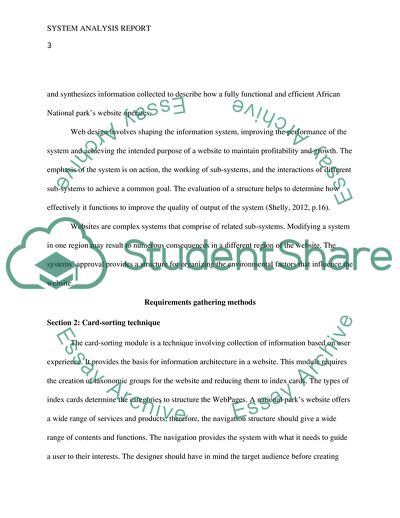Cite this document
(System Analysis: The Creation of a Website for African National Parks Case Study Example | Topics and Well Written Essays - 4500 words, n.d.)
System Analysis: The Creation of a Website for African National Parks Case Study Example | Topics and Well Written Essays - 4500 words. https://studentshare.org/systems-science/1855574-system-analysis
System Analysis: The Creation of a Website for African National Parks Case Study Example | Topics and Well Written Essays - 4500 words. https://studentshare.org/systems-science/1855574-system-analysis
(System Analysis: The Creation of a Website for African National Parks Case Study Example | Topics and Well Written Essays - 4500 Words)
System Analysis: The Creation of a Website for African National Parks Case Study Example | Topics and Well Written Essays - 4500 Words. https://studentshare.org/systems-science/1855574-system-analysis.
System Analysis: The Creation of a Website for African National Parks Case Study Example | Topics and Well Written Essays - 4500 Words. https://studentshare.org/systems-science/1855574-system-analysis.
“System Analysis: The Creation of a Website for African National Parks Case Study Example | Topics and Well Written Essays - 4500 Words”. https://studentshare.org/systems-science/1855574-system-analysis.


